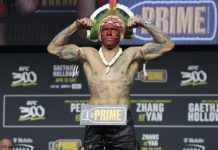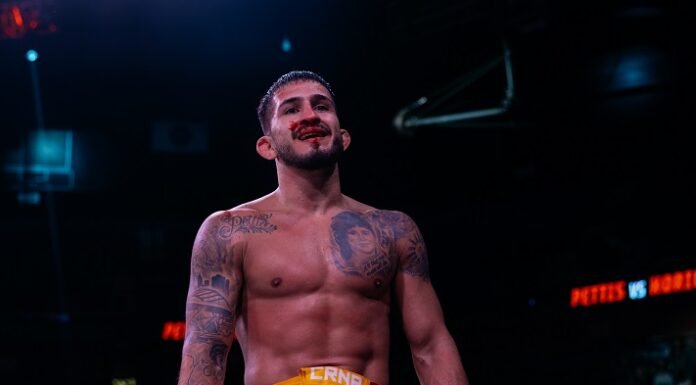
In 2016, after being kept out of New York for years, MMA and the UFC along with it was finally let in. But that doesn’t mean it’s been a smooth ride.
In early 2016, the longtime MMA ban in the state of New York was finally lifted. After years of corruption and insults to the sport of MMA, frankly being told they would never be let in, the sport finally was. It was announced not long after that the UFC would hold their first event in New York, which would become UFC 205. A card in which Conor McGregor made history by becoming the first man to hold two titles simultaneously by defeating Eddie Alvarez in the second round. MMA in New York was off to a great start.
Or so it seemed. The amazing UFC 205 card was nearly overshadowed by a host of downright stupid decisions made by the New York State Athletic Commission. That included decisions such as not allowing fighters that weigh more than seven pounds apart to meet in the cage. Which as a result cost us Kelvin Gastelum vs. Donald Cerrone, as Gastelum missed weight by ten pounds. As a result of Gastelum not even showing up to the weigh-ins, he was suspended for six months.
Fans also lost another fight from that storied card. Rashad Evans was meant to fight Tim Kennedy at middleweight at UFC 205. However, due to an abnormal brain scan, Evans was denied. While it’s true that the brain scan showed an irregularity, it was something Evans had dealt with for a long time. Further, he had been licensed by every other athletic commission to that point. While Ontario later followed New York’s lead, Evans has since been licensed elsewhere.
Also notable, the iron fist the commission attempted to rule with. Thiago Alves being suspended three months for missing weight serves as one example. Yoel Romero being suspended three months for leaving the cage after defeating Chris Weidman is another.
Still, UFC 205 was a massive success. The UFC then planned to go to Brooklyn for UFC 208 (UFC Albany, a Fight Night card, was sandwiched between the two). UFC 208 was headlined by Holly Holm vs. Germaine De Randamie. The card had no major controversy, until the main event. That’s when Germaine De Randamie hit Holly Holm not once, but twice (two separate occasions) after the bell. No points were deducted from De Randamie, and in a fight that most everyone thought she lost, the Dutch fighter won via judges decision. It’s important to point out that the referee who failed to take a point away, and the judges who scored the fight for De Randamie were all brought in by the NYC commission for this event. Holly Holm appealed the fight result, and unsurprisingly it was turned down almost immediately. The New York Commission had struck again.
Just two months later the UFC went to Buffalo, NY for UFC 210. There, the official weigh-ins brought about all sorts of drama. Light heavyweight champion Daniel Cormier missed weight by 1.2 pounds for his main event fight against Anthony Johnson. Minutes later, Cormier came back out and with the help of a towel, made weight for his fight. Video evidence showed Cormier grabbing onto the towel, an old trick trick to cheat the scale. DC made 205lbs. The NYSAC later denied it ever even happened, despite the video evidence. Anthony Johnson later filed for Cormier to be fined 20% of his purse as a result of missing weight but the commission denied it. Even the NYSAC’s own executive director later sided with critics.
Later on that very same day, it was announced that UFC strawweight Pearl Gonzalez was being pulled from her fight with Cynthia Calvillo. Why? Because she had breast implants. This was known by the NYSAC weeks before, but they failed to act until the day before the fight was scheduled to happen. The NYSAC later caved to pressure from media and fans and Gonzalez was allowed to fight on UFC 210. In addition to all this, on fight day Charles Olivera defeated Will Brooks and leapt out of the cage, he was suspended for two months. Incompetence, but wielding an iron fist, yet again. Lets not even get into Mousasi vs. Weidman.
This leads us to UFC 223. Where do we even begin? We all know by now that Tony Ferguson was forced out of his fight against Khabib one week before the event took place. He was replaced by Max Holloway. However on weigh-in day, Max was pulled from the fight as he was deemed “medically unfit” by the NYSAC. How did they come to this conclusion you ask? Well, they looked at him. That’s it, they looked at him. No tests were performed. No detailed look into his weight cutting process was carried out. Commission reps simply took a look at him mid-weight cut and pulled him. For… science? According to members of his team, the cut was going well and Max wanted to keep going, but was not allowed.
This created a rather dire situation. More accurately, the NYSAC created it. In good faith, no doubt. So the UFC turned to Anthony Pettis. The former champion was left without a fight anyway thanks to Conor McGregor injuring Michael Chiesa. So the promotion moved in his direction and had him weigh-in. However, negotiations with Pettis turned sour, and the commission were being sticklers about the 1lb weight allowance not available in title fights. The UFC looked at Paul Felder next, another lightweight on the card who had weighed in at 155 already. This bout seemed to make sense, as both he and Khabib Nurmagomedov had made 155lbs bang on. No problems there, right?
Apparently not. The NYSAC determined that fight couldn’t happen because Felder wasn’t ranked. Keep in mind, this is the same commission that allowed unranked Georges St-Pierre to fight for the middleweight title at UFC 217. So the UFC turned to the last person they could, Al Iaquinta. Who happened to be Felder’s opponent, and who had weighed in at 155.2lbs. This being the last option, the #11 ranked lightweight got the call to fight Khabib on one day’s notice for the UFC lightweight championship.
“How can Iaquinta win the championship if he missed weight by .2?” is the question everyone was asking. After all, Pettis apparently had that come up, though negotiations fell through regardless. Well, according to Dana White, the commission weighed the underwear Al was wearing when he weighed in, and it made up the difference. Therefore, Al weighed 155 pounds, and will be allowed to fight for the lightweight championship. Officially. Maybe. White later acknowledged they may have to sort the details out later.
In the end, the New York State Athletic Commission has made a mess of the MMA events it has overseen thus far. Which makes it incredibly fitting, that after all that happened in the build up to UFC 223, it ended with a man’s underwear being weighed.




















